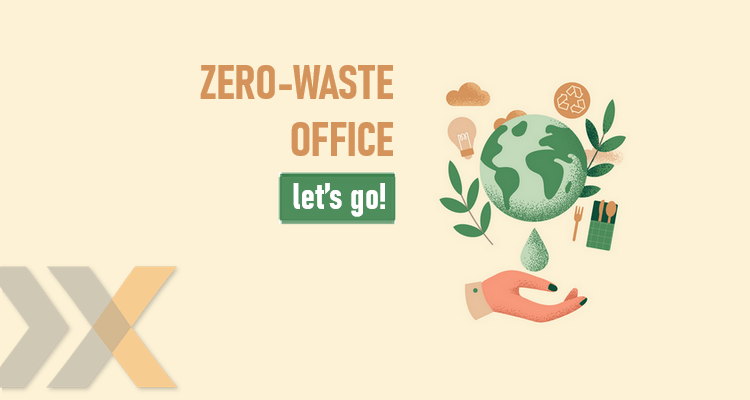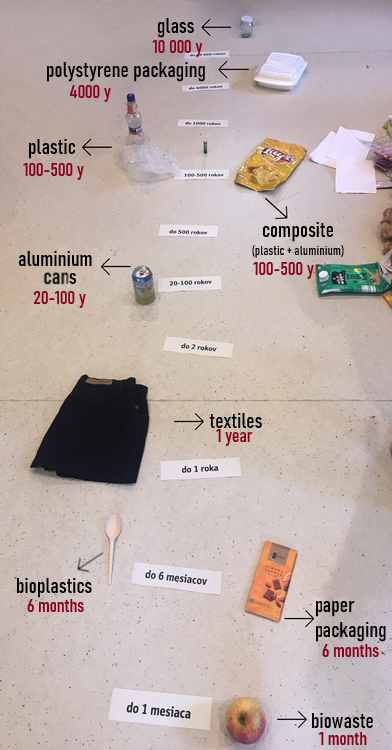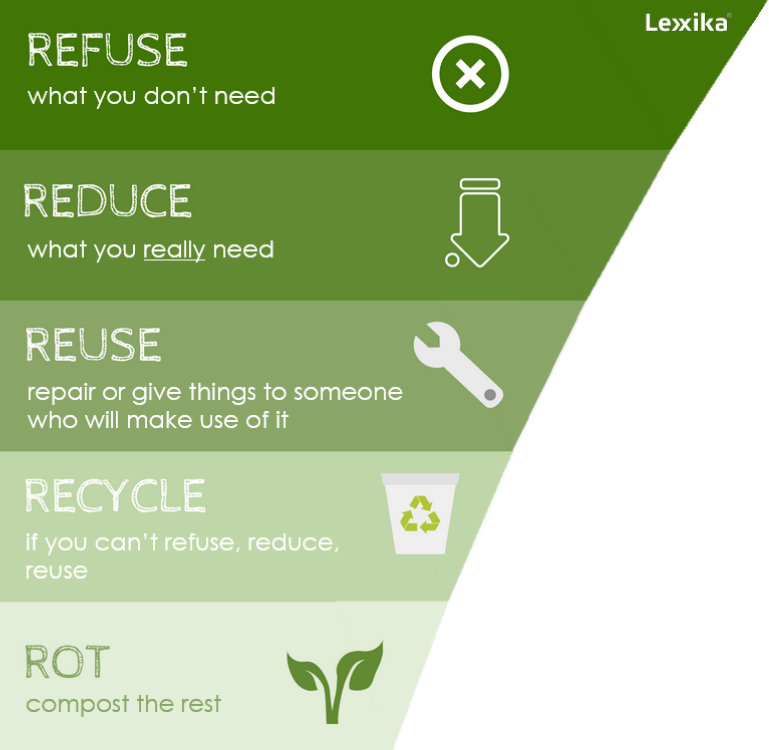
Eva and I started this project with great enthusiasm and motivation. At the very beginning of the introductory lecture, we were told it was not going to be easy. That didn’t put us off and we were eager to learn what the first workshop would be about.
One blog isn’t nearly enough to summarise all that we’ve learned, but we’ll try to mention some interesting points. Let’s start with product life cycle.
Out of sight, out of mind
At the beginning there is (raw) material, followed by production, transport, and distribution. And that’s where we, the consumers, come in – by buying or otherwise acquiring the product. We’re happy to use it for some time, then when it wears out or when we get tired of it, we tend to think its life has come to an end.
We throw the product away, but do we realise where it ends up? Once we throw something in the rubbish bin, it stops existing for us. But this object doesn’t disappear from the face of the earth. Actually, it’s still a long way from reaching its final destination. At best, the product is recycled. At worst (and unfortunately this is still most common), it ends up in an incineration plant or at a landfill, where it’ll remain for a very long time.
Do you know how long it takes for different materials to decompose? In the following timeline, you can see how long the decomposition of some materials normally takes (conditions at landfills are very different).

One more unpleasant fact: In 2018, each EU citizen produced on average 489 kg of municipal waste (= household waste). This equals 1.34 kg of waste per person per day, which is a terrifying figure.
So the best waste is the waste we don’t produce. How can this be accomplished?
The 5 R’s of sustainability
1. Refuse
Refuse what we don’t need (e.g. plastic bags, leaflets, etc.).
2. Reduce
Reduce what we really need (probably not a fourth pair of black trousers).
3. Reuse
Reuse and repair, meaning we should stop buying single-use products, and try to repair broken things instead. If something still works but we really don’t need it, we can, for example, give it to someone who will make use of it.
4. Recycle
Recycle, if we can’t refuse, reduce, reuse or give a product away.
5. Rot
Compost the rest.

Our aim is clear!
During the workshop, we absorbed information like sponges so we could pass it on to our colleagues. And we have to add here that they were already curious and willing to engage after the first workshop. We were excited when they started asking questions about how to actively participate in the project.
At the end of the first workshop we were given some homework. The goal for the next couple of days was obvious: to analyse the situation at Lexika and propose 3 green challenges we would then implement in our office.
What challenges did we pick? Did we manage to introduce them in our office? Read about it in our next article.

I began my journey at LEXIKA during my university days in 2017. LEXIKA, the people that form part of it, and the translation industry have grown on me since then. One of the day-to-day challenges I have to face is finding new talented translators. Furthermore, I take care of developing good and open relationships with our long-standing translators who make it possible for us to do what we love. Over time, I was put in charge of marketing activities and internal HR. I don’t have to worry about my job turning into a daily grind and I learn something new every day. :)
Share it!
 10.12.2019
10.12.2019